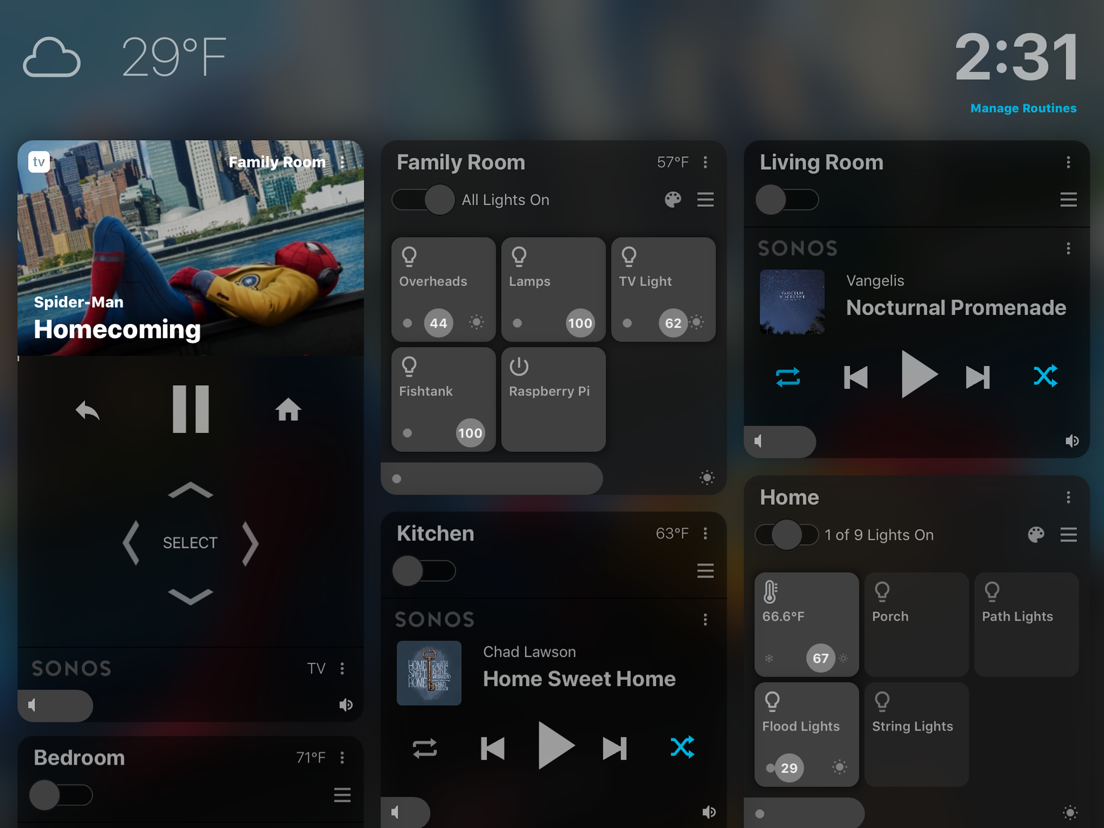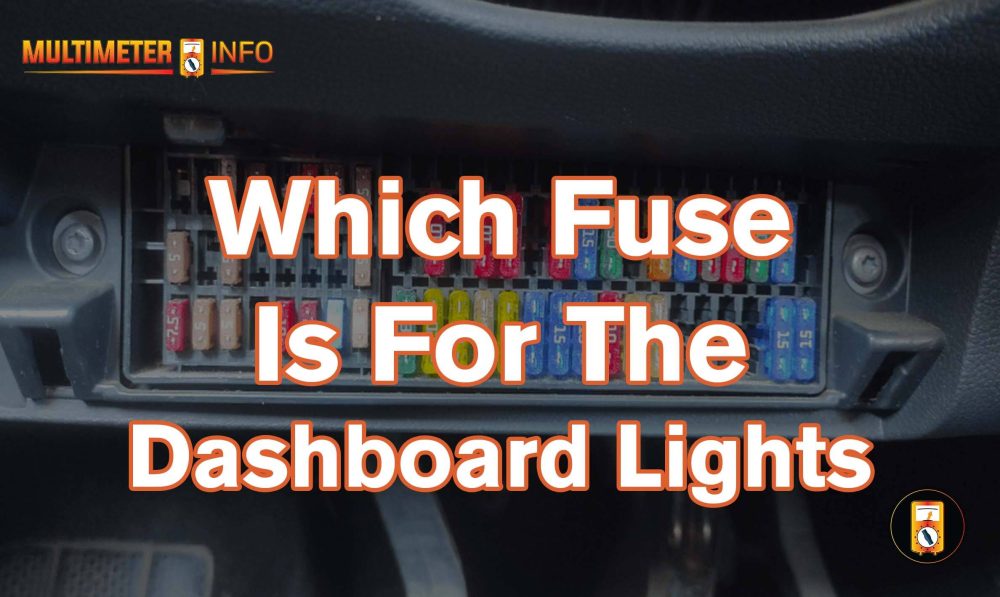The elusive fuse for the dashboard, a crucial component of any vehicle's electrical system, can be notoriously hard to locate. This small but vital device protects the dashboard's delicate electronics from electrical surges, ensuring that the driver has access to essential information while on the road.
Without a properly functioning fuse, the dashboard can malfunction, leaving the driver in the dark about critical vehicle information. Understanding the location and purpose of the dashboard fuse is therefore of paramount importance for maintaining a safe and well-maintained vehicle.
This article will delve into the mysterious world of dashboard fuses, exploring their intricate functionalities, shedding light on their historical significance, and providing a comprehensive guide to finding this often-hidden component.
Where Is Fuse For Dashboard
Understanding the location of the fuse for the dashboard is crucial for maintaining a well-functioning vehicle. This small but vital component plays a significant role in protecting the dashboard's electrical system, ensuring that the driver has access to essential information while on the road.
- Purpose: Protection against electrical surges
- Location: Varies depending on vehicle make and model
- Identification: Typically labeled or color-coded
- Replacement: Requires matching amperage and type
- Tools: Fuse puller or needle-nose pliers
- Safety: Disconnect battery before handling
- Warning Signs: Malfunctioning dashboard, blown fuse
- Prevention: Avoid overloading circuits
- Maintenance: Inspect fuses regularly
Understanding these key aspects can help ensure the proper functioning of the dashboard fuse, contributing to the overall safety and reliability of the vehicle.
Purpose
The primary purpose of a fuse in the dashboard is to protect the electrical system from sudden and excessive voltage spikes or surges. This protection is critical because sensitive electronic components within the dashboard, such as gauges, warning lights, and displays, can be easily damaged by even minor electrical surges.
When an electrical surge occurs, the fuse acts as a sacrificial barrier, breaking the circuit and preventing the excessive current from reaching the dashboard components. This helps to safeguard the delicate electronics from damage, ensuring that they can continue to function properly and provide the driver with essential information while on the road.
Real-life examples of electrical surges that can affect the dashboard include lightning strikes, battery malfunctions, or accidental short circuits. A properly functioning fuse will quickly blow in these situations, isolating the dashboard from the surge and preventing any serious damage.
Understanding the critical role of fuses in protecting the dashboard's electrical system highlights the importance of regular fuse inspections and timely replacements when necessary. By ensuring that the fuses are in good condition and of the correct amperage, drivers can help prevent electrical problems, maintain the functionality of their dashboard, and enhance the overall safety and reliability of their vehicle.
Location
The location of the fuse for the dashboard can vary significantly depending on the make and model of the vehicle. Understanding the reasons behind this variation is crucial for efficient fuse identification and replacement.
- Fuse Panel Location: The fuse panel, which houses multiple fuses for various vehicle components, can be located in different areas, such as under the dashboard, in the engine compartment, or even in the trunk.
- Fuse Box Design: The design of the fuse box itself can vary, with some vehicles having multiple fuse boxes located in different areas.
- Fuse Labeling: The labeling or identification of fuses can vary between vehicle models and manufacturers, making it challenging to locate the specific fuse for the dashboard.
- Model-Specific Differences: Even within the same make, different models may have unique fuse arrangements and locations due to variations in electrical systems and dashboard configurations.
Understanding these factors highlights the importance of consulting the vehicle's owner's manual or referring to online resources specific to the make and model for precise fuse identification and location.
Identification
The identification of fuses through labeling or color-coding plays a critical role in locating the fuse for the dashboard. This is because fuse panels typically house multiple fuses, each responsible for a specific electrical component or system within the vehicle. Without clear identification, it can be challenging to determine which fuse is associated with the dashboard.
Labeling and color-coding provide a standardized method for identifying fuses, making it easier for vehicle owners and technicians to locate the specific fuse they need to inspect or replace. This is especially important when dealing with complex electrical systems and multiple fuse panels, as it helps to streamline the process and reduce the risk of errors.
For instance, in many vehicles, fuses are labeled with abbreviations or symbols that indicate their specific function. This labeling system allows individuals to quickly identify the fuse responsible for the dashboard, even if they are unfamiliar with the vehicle's electrical layout. Similarly, color-coding fuses can provide a visual cue, with different colors assigned to different amperage ratings or circuit types, making it easier to locate the correct fuse.
Understanding the connection between fuse identification and locating the fuse for the dashboard is crucial for maintaining a well-functioning electrical system. This understanding enables vehicle owners and technicians to efficiently identify and access the correct fuse, ensuring timely troubleshooting and resolution of electrical issues related to the dashboard.
Replacement
Replacement of a blown fuse in the dashboard requires careful attention to matching both the amperage and type of the fuse. This is crucial to ensure the proper functioning and protection of the dashboard's electrical system.
- Amperage Rating: The amperage rating of a fuse determines the maximum amount of current it can safely handle. Installing a fuse with a higher amperage rating than specified can lead to excessive current flow, potentially causing damage to electrical components or even electrical fires.
- Fuse Type: Fuses come in different types, such as blade-type, mini-fuses, and cartridge fuses. Each type has its own specific design and dimensions, and using the wrong type of fuse can result in a loose fit or poor electrical contact, leading to potential malfunctions.
- Fuse Construction: Fuses are constructed using different materials and designs, such as glass or ceramic bodies, metal contacts, and various internal elements. Matching the type of fuse ensures compatibility with the fuse holder and proper circuit protection.
- Circuit Compatibility: The amperage and type of fuse must be compatible with the electrical circuit it is protecting. Installing a fuse with an incorrect rating or type can compromise the circuit's functionality or protection, potentially leading to electrical issues or component failures.
Understanding the importance of matching amperage and type when replacing a dashboard fuse highlights the significance of using the correct fuse for the specific application. This ensures the proper operation and protection of the dashboard's electrical components, enhancing the reliability and safety of the vehicle.
Tools
When it comes to locating and replacing a blown fuse in the dashboard, having the right tools at hand is essential. Fuse pullers and needle-nose pliers are two indispensable tools that greatly simplify the task, ensuring efficient and safe handling of fuses.
Fuse pullers are specifically designed to grip and remove fuses securely, minimizing the risk of accidental contact with live electrical components. Their insulated handles provide protection against electrical shock, making them a safer choice compared to using bare hands or regular pliers.
Needle-nose pliers, with their precision tips and gripping capabilities, can also be effectively used to remove and insert fuses, especially in tight or awkward locations. Their versatility makes them a valuable tool for various electrical tasks beyond fuse handling.
In the context of "Where Is Fuse For Dashboard," these tools play a critical role by providing a safe and convenient means to interact with fuses. They enable users to accurately locate, extract, and replace fuses, ensuring proper electrical functionality and protection of the dashboard's components.
Understanding the connection between "Tools: Fuse puller or needle-nose pliers" and "Where Is Fuse For Dashboard" highlights the importance of using appropriate tools for electrical maintenance tasks. By utilizing these tools, vehicle owners and technicians can effectively troubleshoot and resolve electrical issues related to the dashboard, contributing to the overall reliability and safety of the vehicle.
Safety
When working with electrical systems, particularly when locating and handling fuses related to the dashboard, ensuring safety is paramount. Disconnecting the battery before handling fuses is a crucial step that should not be overlooked.
- Electrical Shock Prevention: Disconnecting the battery eliminates the risk of electrical shock by isolating the electrical system from any potential sources of power. This is especially important when working with live circuits or components.
- Short Circuit Avoidance: A short circuit occurs when current flows through an unintended path, potentially causing damage to electrical components. Disconnecting the battery prevents the possibility of short circuits, which can arise from accidental contact between tools and live wires.
- Fire Hazard Mitigation: Electrical fires can be a catastrophic consequence of mishandling electrical systems. Disconnecting the battery removes the power source, minimizing the risk of sparks or arcs that could ignite flammable materials.
- Component Protection: Sensitive electronic components within the dashboard, such as gauges, warning lights, and displays, can be damaged by voltage spikes or surges. Disconnecting the battery safeguards these components from potential harm during fuse replacement.
Understanding the implications of "Safety: Disconnect battery before handling" underscores its vital role in ensuring a safe and successful process of locating and replacing fuses related to the dashboard. By adhering to this safety protocol, individuals can minimize the risk of electrical hazards, protect sensitive components, and maintain the integrity of the vehicle's electrical system.
Warning Signs
In the context of "Where Is Fuse For Dashboard," recognizing the warning signs associated with a malfunctioning dashboard and a blown fuse is crucial for timely troubleshooting and resolution.
- Dim or Flickering Lights: When the dashboard lights, including gauges, warning indicators, or display screens, exhibit dimming or flickering, it could be a sign of a failing fuse. This can result from loose electrical connections or a blown fuse that interrupts the power supply to the dashboard.
- Inoperative Gauges: Malfunctioning gauges, such as the speedometer, fuel gauge, or tachometer, can be an indication of a blown fuse. Fuses protect these gauges from electrical surges and ensure their proper operation.
- No Power to Dashboard: A completely non-functional dashboard, where none of the lights or gauges respond, could point to a blown fuse in the main power supply line to the dashboard. This fuse acts as a circuit breaker, safeguarding the dashboard from excessive current or short circuits.
- Electrical Burning Smell: A noticeable burning smell emanating from the dashboard can be a warning sign of an electrical fault, potentially accompanied by a blown fuse. Immediate attention is required to prevent further damage to the electrical system.
Understanding these warning signs empowers individuals to promptly identify potential fuse-related issues with the dashboard. By paying attention to these indicators and taking appropriate action, they can minimize the risk of more severe electrical problems, ensuring the safety and functionality of their vehicle.
Prevention
In the context of "Where Is Fuse For Dashboard," understanding the importance of preventing circuit overloading is crucial for maintaining a well-functioning dashboard and ensuring the longevity of its electrical components. Circuit overloading occurs when an excessive amount of electrical current flows through a circuit, potentially leading to blown fuses, damaged wires, and even electrical fires.
- Proper Fuse Selection: Selecting fuses with the correct amperage rating for each circuit is essential. Oversized fuses may not blow in the event of a circuit overload, potentially causing damage to wiring and components.
- Avoid Multiple High-Power Devices: Using multiple high-power devices simultaneously, such as a mobile phone charger, GPS navigation, and heated seats, can strain the electrical system and increase the risk of circuit overloading. It's advisable to limit the usage of such devices when possible or consider upgrading the electrical system to accommodate the additional load.
- Regular Electrical Inspections: Periodic electrical inspections can help identify potential sources of circuit overloading, such as loose connections, damaged insulation, or faulty wiring. Promptly addressing these issues can prevent circuit overloads and ensure the overall safety and reliability of the vehicle's electrical system.
- Professional Installation of Accessories: When installing aftermarket electrical accessories, such as sound systems or lighting upgrades, it's crucial to consult a qualified technician to ensure proper installation and prevent circuit overloading. Improper installation can lead to excessive current draw and potential damage to the dashboard and its components.
By adhering to these preventive measures, vehicle owners can effectively avoid circuit overloading, minimizing the risk of fuse blowouts, electrical malfunctions, and ensuring the longevity and functionality of the dashboard and its components.
Maintenance
In the context of "Where Is Fuse For Dashboard," regular fuse inspection plays a critical role in maintaining a well-functioning dashboard and ensuring the reliability of its electrical components. Fuses serve as protective devices within the electrical system, safeguarding against excessive current flow that could damage sensitive components or cause electrical fires.
By regularly inspecting fuses, vehicle owners can proactively identify and replace blown or weakened fuses before they lead to major electrical problems. This proactive approach not only helps prevent sudden electrical failures and dashboard malfunctions but also contributes to the overall longevity of the vehicle's electrical system.
Real-life examples of fuse inspection within the context of "Where Is Fuse For Dashboard" include:
- Dim or flickering dashboard lights: A blown or loose fuse can disrupt the power supply to dashboard lights, resulting in dim or flickering illumination. Regular fuse inspection allows for timely detection and replacement, restoring proper lighting and ensuring clear visibility of essential dashboard information.
- Inoperative gauges: Fuses protect dashboard gauges, such as the speedometer and fuel gauge, from electrical surges. A blown fuse can cause these gauges to malfunction or become inoperative, compromising the driver's ability to monitor critical vehicle information. Regular fuse inspection helps prevent such situations and ensures accurate gauge readings.
- Electrical burning smell: A strong burning smell emanating from the dashboard can be a warning sign of an electrical fault, potentially accompanied by a blown fuse. Regular fuse inspection enables early detection of such issues, allowing for prompt corrective action to prevent further damage to the electrical system.
By understanding the importance of regular fuse inspection and its direct connection to "Where Is Fuse For Dashboard," vehicle owners can take an active role in maintaining their vehicle's electrical health. This understanding empowers them to make informed decisions, prioritize fuse inspection as part of routine maintenance, and contribute to the overall safety and reliability of their vehicle.
In summary, understanding "Where Is Fuse For Dashboard" involves a multifaceted exploration of the dashboard's electrical system, focusing on fuse identification, location, and maintenance. Key points highlighted in this article include the critical role of fuses in protecting sensitive dashboard components from electrical surges, the importance of proper fuse selection and replacement, and the significance of regular fuse inspection to prevent electrical malfunctions.
These elements are interconnected, as accurate fuse identification and location enable timely replacement of blown fuses, while regular fuse inspection contributes to proactive maintenance and prevents more severe electrical issues. By understanding these interconnections, vehicle owners can actively contribute to the longevity and reliability of their dashboard and its electrical components.



Detail Author:
- Name : Delphine Davis
- Username : iadams
- Email : schumm.baron@hotmail.com
- Birthdate : 2002-08-15
- Address : 3720 Hailie Flat Branditown, OR 61680
- Phone : 505.989.0309
- Company : Kessler-Auer
- Job : Environmental Scientist
- Bio : Ipsum quo pariatur odio. Dolorem culpa iusto et est sed similique adipisci in. Quam veritatis modi illum facere aut ducimus recusandae.
Socials
twitter:
- url : https://twitter.com/ruthe.abshire
- username : ruthe.abshire
- bio : Illum animi libero ut ullam odio omnis aut. Ea adipisci dolor quae maiores nihil consequatur. Quia qui reprehenderit aliquam et iste vel et suscipit.
- followers : 3388
- following : 345
linkedin:
- url : https://linkedin.com/in/ruthe141
- username : ruthe141
- bio : Facere tempore adipisci ex ipsa est ab.
- followers : 3450
- following : 2434
tiktok:
- url : https://tiktok.com/@abshirer
- username : abshirer
- bio : Ratione rerum dolorum et dolore. Blanditiis sunt perferendis qui.
- followers : 6048
- following : 2287
instagram:
- url : https://instagram.com/rutheabshire
- username : rutheabshire
- bio : Saepe vitae nostrum ut in delectus. Maxime nam esse incidunt.
- followers : 1844
- following : 921